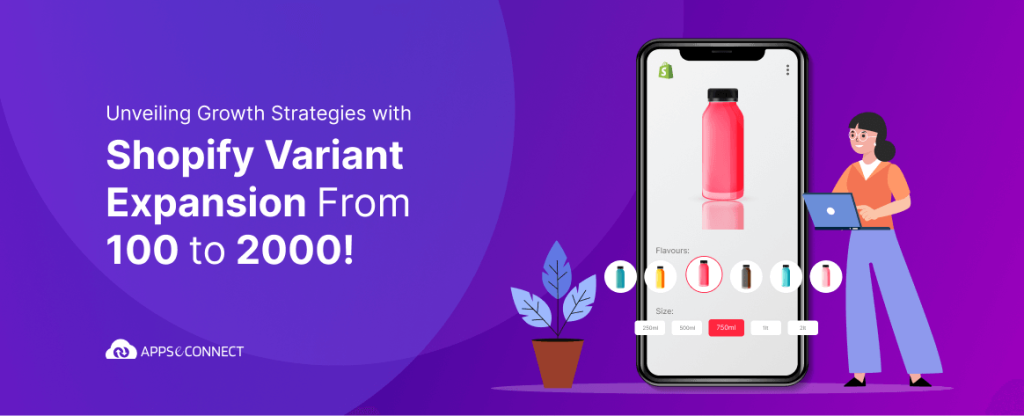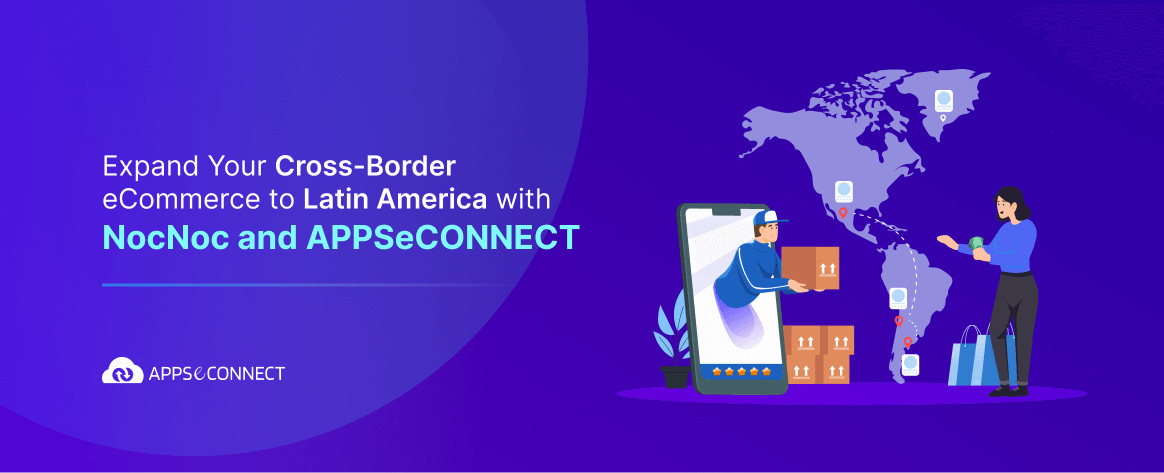When it comes to the management of product catalogs, most SaaS eCommerce platforms come with their unique set of inherent limitations. These limitations pertain to factors such as API usage, volume of the product graphics, size of the videos allowed for upload by the administrator, etc. It is often the case that eCommerce platforms do not permit the merchants to showcase their products in more than a specific number of variations, slicing down their opportunities to capture prospects. Shopify, however, has redefined itself and has taken a step further – the eCommerce giant has replaced its former limit of 100 Shopify variant per product by increasing it to 2000!
Shopify’s decision to increase the variant limit is a significantly important step for eCommerce businesses and has ushered in a new era. It now promises to provide more flexibility to merchants in showcasing their product offerings with a better shopping experience for the customers. In this article, we will delve into why Shopify variant expansion is a game-changer for eCommerce merchants and substantiate its implications through real-world examples.
Reasons Why Shopify Has Made This Move
Shopify has consistently been at the forefront of providing the latest, cutting-edge technology for the eCommerce industry. It has upgraded its platform over the years to cater to the global market demands of the users and has been in top shape for growing businesses aspiring to scale and skyrocket their ventures. In our recent article, we already discussed the partnership between Shopify and Amazon to develop the Buy with Prime Feature on the Shopify webstores, which was a strategic move to bolster the conversion rates.
Now, with the increased number of Shopify variants from 100 to 2000 offered to the users, Shopify has entered a new dimension altogether! This increase in Shopify variants is crucially important for organizations with an extensive and varied line of products – merchants can now efficiently and coherently showcase a wider range of product variants based on size, color, material, etc. within a single product listing. This not only streamlines the creation and management of complicated product inventories but also offers a seamless and more comprehensive shopping experience to the customers.
Having said this, let us now explore the underlying factors behind Shopify’s decision to expand the Shopify variant limit:
Enhanced Capabilities to Manage Complex Product Catalogs
Shopify’s decision to increase the product variant limit has directly enhanced its ability to manage intricate product catalogs. With this new feature, merchants can now leap forward and offer a seamless user experience to the customers, paving the way for effortless navigation and exhibition of varied lines of products to their customers.
Targeting Large Enterprises
Shopify’s focus on catering to the demands of large-scale enterprises is evident in all its years of eCommerce development. By increasing the product variant limit, Shopify has further expressed its intent to meet the requirements of manufacturers and retailers, catering to their specific business needs on an enterprise level. This strategic move of increasing the Shopify variant number not only facilitates Shopify users to exhibit as many products in as many variants as possible, but also positions Shopify as one of the fastest-growing and most widely adopted eCommerce platforms for Enterprises and SMEs alike.
Moving forward with the article, we will understand why the limit of 100 Shopify variants was inadequate and could not suffice for larger enterprises and retailers, necessitating the need for expansion.
The Need for Shopify Variants
When running an eCommerce store, product variants serve to offer a broader range of product choices to customers, enhancing their shopping experience. These choices often circle around aspects such as product characteristics, packaging, distribution methods, attributes, color options, etc. which directly impact the pricing and inventory management for the products.
This means that the manufacturer or the retailer can approach the customer with multiple variants of the same product to engage a larger group of buyers. This provides an opportunity for the merchant to tap into a bigger market with more available products and hence control the pricing of each variant.
Let us move forward with a use case to help us understand the scenario better.
Consider a company XYZ selling Vitamin supplements. The supplements are available in different pack sizes of 20, 50, or 100 tablets and a liquid form, in bottles of 20 ml and 50 ml. Moreover, they are also available in different flavors such as pineapple, strawberry and orange.
In such a case, specific variant selection determines the product price and influences the final cost of the product – choosing between 20ml and 50ml bottles of the supplement will have a significant effect on the product price, and selecting a specific flavor may also impact the price.
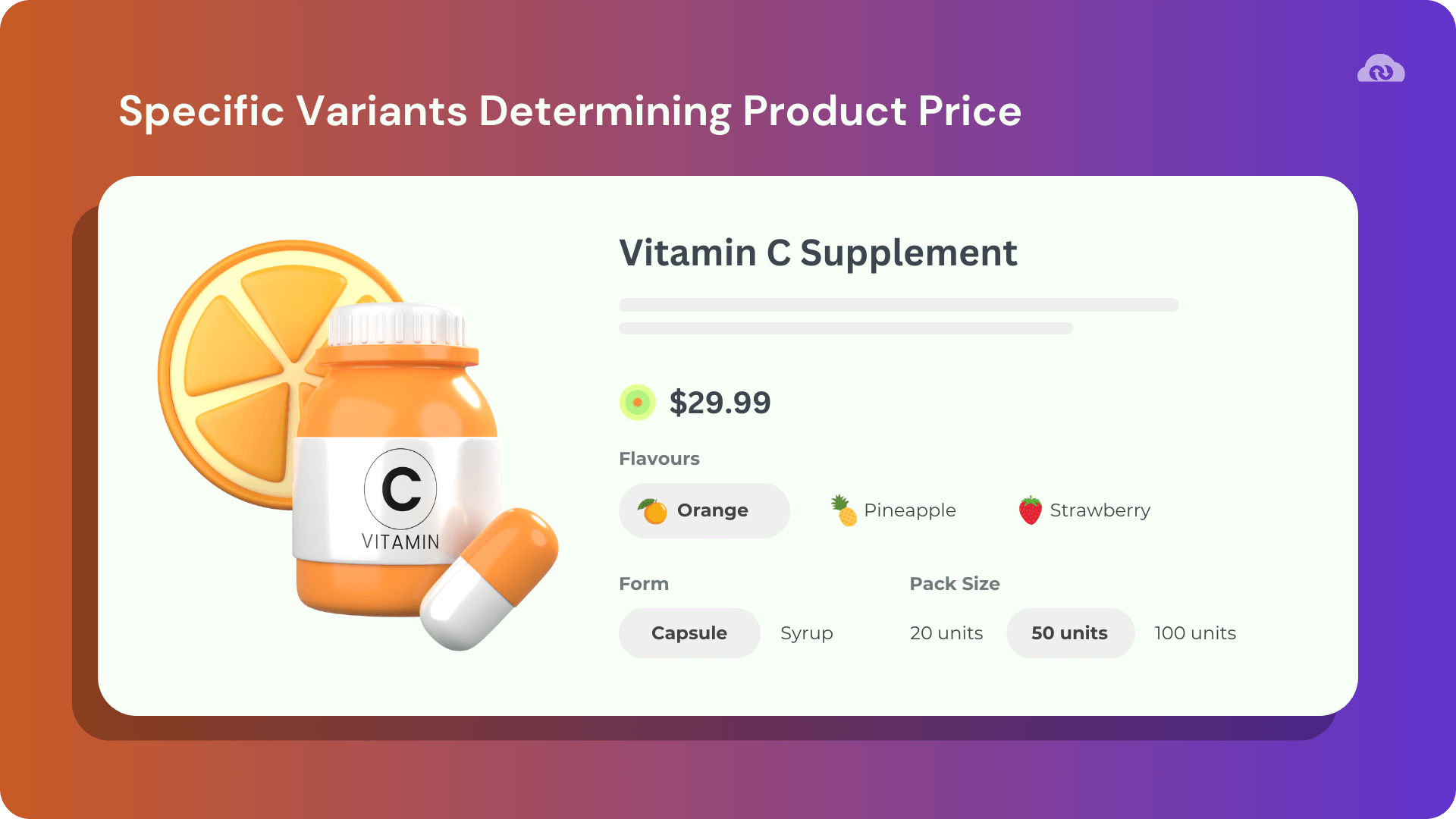
Moreover, specific product attributes/selections can also lead to a change in pricing. For example, if a buyer wants to customize their Tesla Model Y with a metallic blue color, they will have to incur an additional cost of $1000 for it! This shows how easily, with the correct help of product variants, merchants and businesses can showcase all their products and determine their prices in the market.
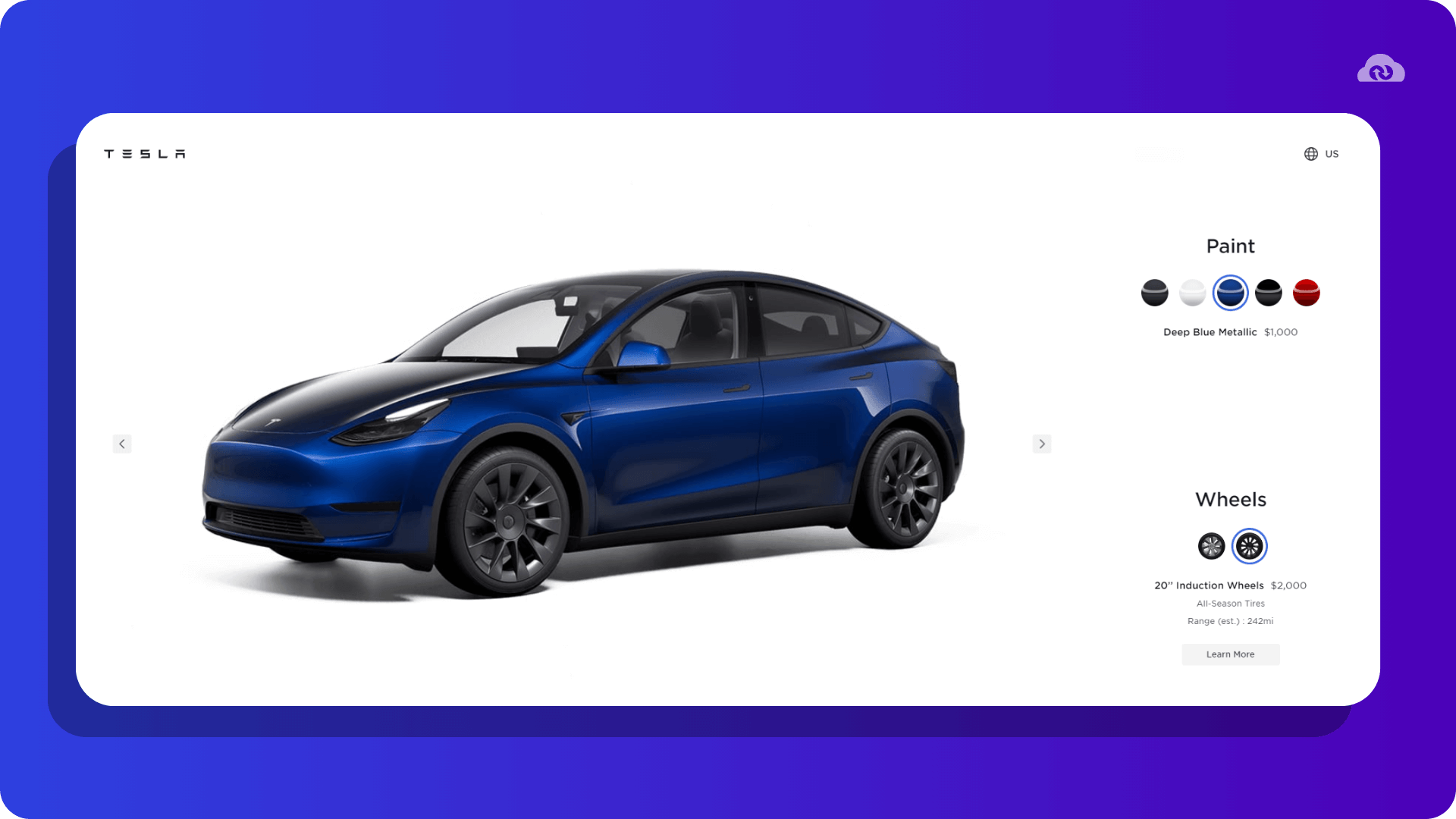
It is important to note, however, that even though many product variants are built to order, there are some products that need to be stocked as well. Ensuring that the correct product variant is displayed on the Shopify storefront calls for effective and efficient inventory management too. Without maintaining a proper inventory for the specified range of products, fulfilling orders and delivering within time can be a challenge, ultimately affecting the overall customer experience.
Practical Use-Case Showcasing Shopify Variant Details
In many industries such as apparel and footwear, the total number of product variants is often restricted and a limit of 100 variants might seem reasonable. But what happens when the product variants reach a substantial number? Here, allowing owners to showcase their products with more variants is a crucial necessity. In this section, we will dedicatedly investigate the scenarios where the need for a higher number of product variants becomes apparent and inevitable.
To illustrate this idea, we will first examine the curious case of Tesla’s Model Y! This car comes with a lot of selection options to choose from and by considering all the possible combinations available, we will be able to determine the magnitude and gain insight into the potential product variants that may arise.
Note: This example is only for demonstration purposes and does not imply that Tesla is using or will use Shopify as their webstore😊
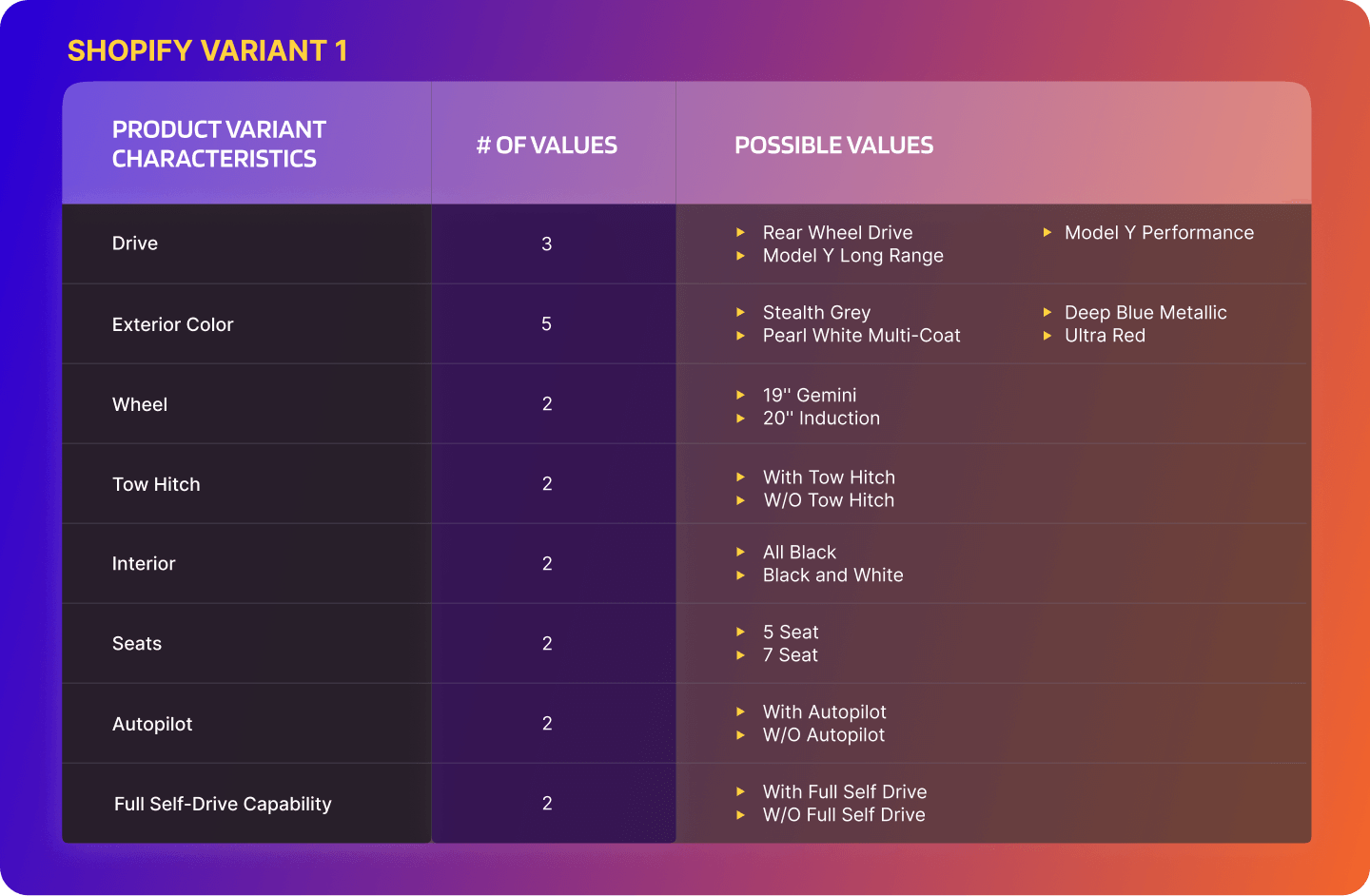
In the above chart, if you calculate, the total number of variants for a single Model Y car with the available combinations works out to be 960 variants! The problem arises when and if Tesla wants to add one or two more attributes like With or W/O Sunroof or With or W/O Voice Assist – here, even in the sunroof scenario, the number of potential variants would skyrocket to around 1920, far exceeding the 100-variant limit typically allotted for a product.
Let us now move on to our next example, in the world of electronic sales. Here we will have a look at the Samsung flagship product, the Galaxy S24 smartphone, and see how many product variants are possible.
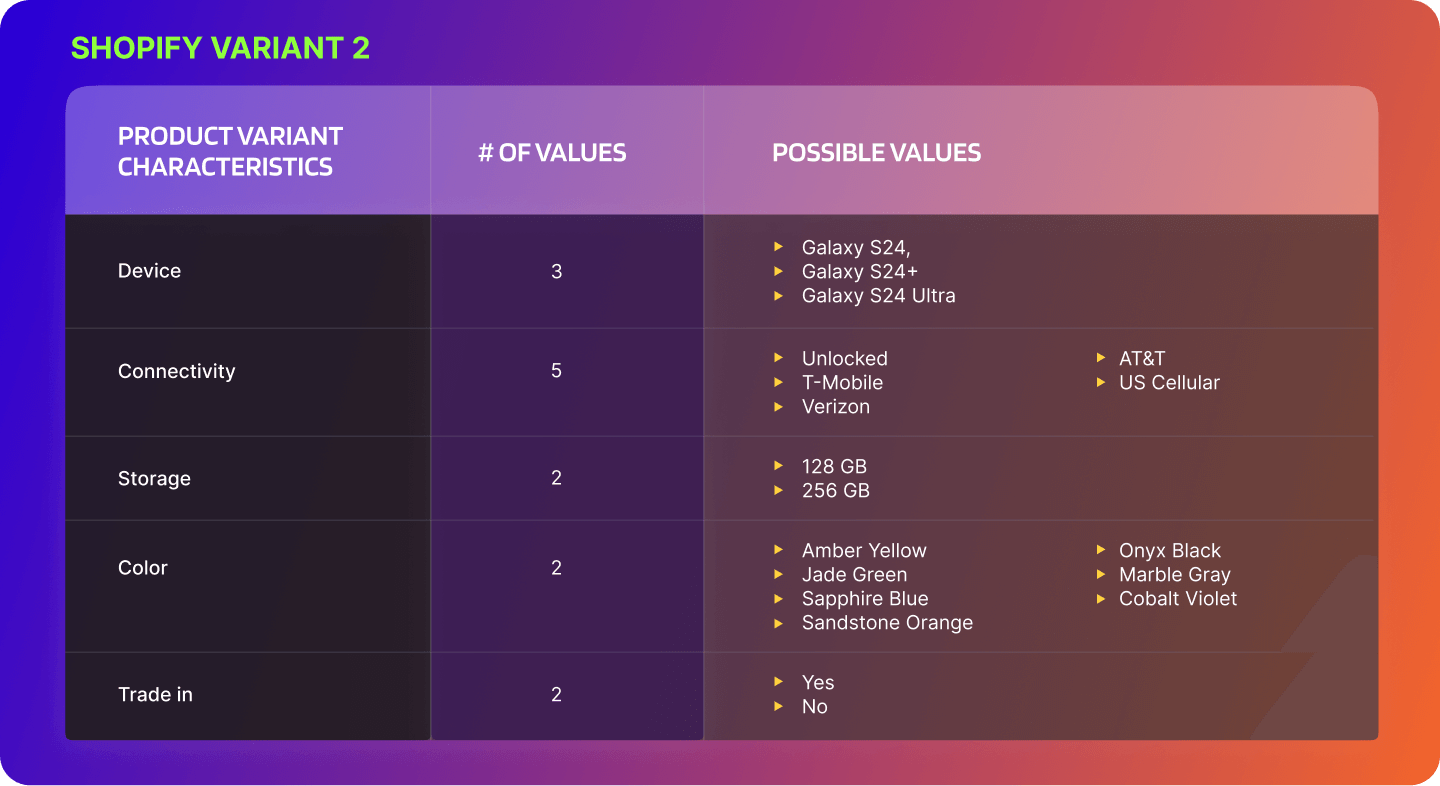
In this case, with the available product combinations, the number of variants for a single smartphone turns out to be 420 variants. Now just suppose that Samsung wants to sell these phones in 3 different RAM sizes and 2 Android versions separately – in such a case the potential number of product variants would be nearly 2500, again surpassing the 100-variant limit easily!
This clearly underlies the crucial necessity of having more product variants for any product and how Shopify is helping merchants by allowing them to showcase their products to the fullest and drive revenue from improved sales.
Conclusion – Leveraging Multiple Variants for Shopify
Shopify’s recent decision to increase the product variant limit from 100 to 2000 Shopify variants per product is a significant move and a strategic milestone for the eCommerce giants. This added feature not only grants merchants greater flexibility in showcasing their products but also elevates the overall shopping experience for their vast clientele. With its ability to manage intricate product catalogs and cater to the needs of large manufacturers and enterprises, Shopify has been positioning itself as one of the leading eCommerce platforms in the industry and has solidified itself as a frontrunner in the eCommerce sector.
Adding this new feature has opened a vast spectrum of opportunities for Shopify merchants all over the globe. With the extended capability to offer a wider range of product options, merchants can now easily diversify their product lines and tap into a larger customer base. This feature also reflects Shopify’s constant commitment to improving and enhancing the eCommerce platform to bolster the growth of the merchants. It is indeed, with these tools and resources, that Shopify is empowering businesses to thrive in the fiercely competitive market of eCommerce platforms and emerge as one of the most suitable, scalable and future-ready eCommerce solutions in the market today.
About APPSeCONNECT
Unlock the potential of intelligent integration with APPSeCONNECT, a cutting-edge, low-code integration platform engineered to streamline and automate critical business applications and data. By leveraging pre-packaged integration templates and connector packages for Shopify, APPSeCONNECT enables businesses to effortlessly connect essential applications, ensuring seamless data flow and process automation. Seamlessly integrate your Shopify storefront and ERP system within a single and secure Business Process Automation platform, and propel your business towards exponential growth.
If you’re a Shopify merchant and are tired of managing product descriptions across your backend and front end, join our webinar “OpenAI Integration for SAP and Shopify to Quickly Generate Product Information” and “OpenAI Integration for Dynamics Business Central to Elevate Your eCommerce Game“. Discover how integration and AI can revolutionize your workflow, automating product descriptions on Shopify. Accelerate your time to market and enhance both product and customer experiences effortlessly.


